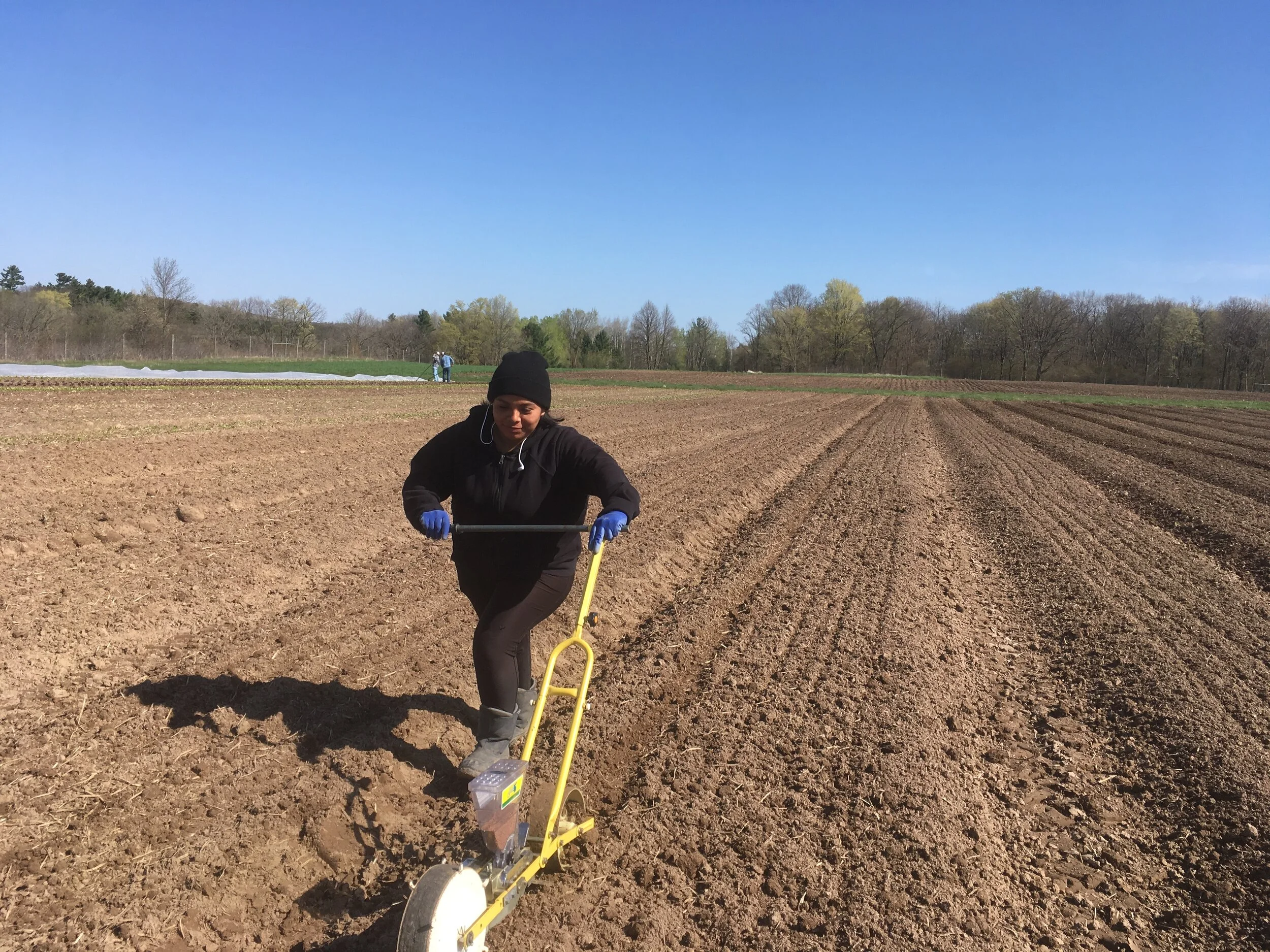February wake up call...go back to sleep.
By the time the market hits this Saturday, it will be February. Time is limited for sleepy farmers. We’ll have to wake up soon. Or will we? That’s just the thing, no one really knows! If we were to all plan by the previous 3 years, I think each farmer I know would set their planting schedule back about 2 weeks, minimum. Springtime in the upper midwest, for years running, have been a mucky, cold, ice/mud/ice sandwich. It’s tested everyones assumptions about when, and even why we do what we do.
Will this year be the same? February is when we try to figure that out.
With recent changes to the farm here, I’ll be able to start things up a little later. For the short term, this is a good thing for the farm, and for the mission of trying to grow food as sustainably as possible. It means many weeks less of running a greenhouse heater, a wildly inefficient thing to do when the weather is cold, unpredictable, and seemingly cloudy all the time. It means more flexibility too. If we can start the greenhouse even 2 weeks later than we usually would, we can get closer to predicting just how late, or early, the spring will be. And though the common impulse with farmers is to get things done early, and start up the greenhouse early (to take advantage the very moment the ground is ready), I’ve found this to not be the most advantageous. It’s very counter intuitive.
Pushing back the greenhouse schedule more and more each year has ironically given more flexibility. This year it will be later than ever. On top of flexibility, it’ll save money and not a small amount of carbon output relative to the veggies grown.
For years, I dreamed of having a direct seed farm, giving up on the greenhouse. I still dream of that. By saying that, I mean having a farm with no greenhouses, and no transplants, and no guessing about when frost out will be. Just planting directly into the ground with crops that thrive here when the weather says so. That would mean no tomatoes, or crops that are truly southern in their origin. A veggie farm with no tomatoes? Talk about scandal! It would mean as many overwintered crops as possible (planted in Autumn, harvested in Spring). It would also mean a lower carbon output, no peat moss from potting soil, no thick mil plastic to replace every 4 years. And, no worries that when the next mega wind storm blows through, the metal rib cage of the greenhouse will fly over and impale the neighbors place (unlikely, but still a worry). To be waking up some April morning, after mother nature has given her blessing, and hitting the soil with the seeder sounds like luxury, well…by farming standards anyway.
Maybe that will still happen one day. This year could be a big factor in figuring that out. If that little dream doesn’t come true, everything will be okay. As far as dreams go, it’s pretty simple. Can you even call it a dream? Where’s the fame and fortune?
For now, it’s February. Farmers will have to get up soon, maybe. But maybe not. It’s anyones guess.
Marisol (2019 Crew) Living the (Simple) Dream.
